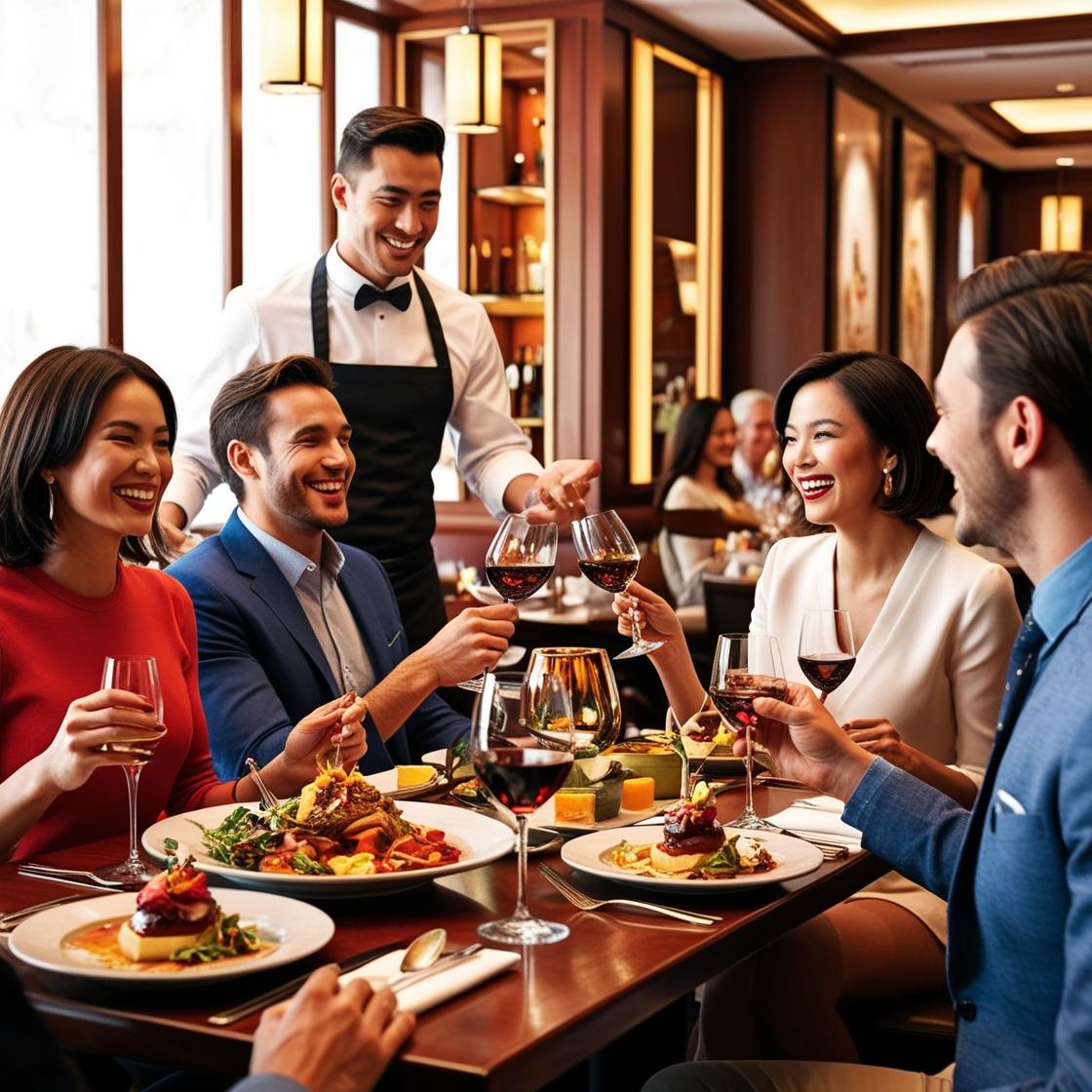Your restaurant’s menu is more than just a list of dishes—it’s a powerful tool that shapes your customers’ dining experience and drives profitability. A well-designed menu can highlight your best offerings, encourage upselling, and reflect your brand’s personality. Here’s how to craft a menu that sets your restaurant apart and maximizes its success.
1. Reflect Your Brand Identity
Your menu should align with your restaurant’s theme, cuisine, and overall branding.
Tips to Incorporate Branding:
- Use a design style (colors, fonts, and images) consistent with your restaurant’s ambiance.
- Include menu descriptions that showcase your unique voice and personality.
- Highlight signature dishes that represent your brand.
Example: A fine-dining restaurant might use elegant fonts and detailed dish descriptions, while a casual eatery could opt for a playful and bold design.
2. Focus on Menu Engineering
Menu engineering involves strategically organizing items to maximize profitability and popularity.
Steps to Engineer Your Menu:
- Analyze Menu Items: Categorize dishes as stars (high-profit, high-popularity), puzzles (high-profit, low-popularity), plow horses (low-profit, high-popularity), and dogs (low-profit, low-popularity).
- Highlight Stars: Use bold fonts, boxes, or icons to draw attention to your best items.
- Optimize Pricing: Use psychological pricing (e.g., $9.99 instead of $10) to encourage purchases.
Pro Tip: Avoid dollar signs, as they can make customers more price-conscious.
3. Keep It Simple and Easy to Read
Overwhelming customers with too many choices can lead to decision fatigue.
How to Simplify Your Menu:
- Limit the number of items in each category (appetizers, mains, desserts).
- Use concise descriptions that focus on key ingredients and preparation methods.
- Ensure your menu is visually balanced with enough white space.
Benefit: A clean and straightforward menu improves readability and helps customers order confidently.
4. Use High-Quality Photos Wisely
Images can enhance your menu, but they must be used strategically.
Best Practices for Menu Photos:
- Include professional, appetizing photos for a few key dishes.
- Avoid cluttering the menu with too many images.
- Ensure photos reflect the actual appearance of the dishes served.
Tip: Invest in professional food photography to make your dishes look irresistible.
5. Leverage Descriptive Language
Compelling descriptions can entice customers to try specific dishes.
How to Write Menu Descriptions:
- Highlight ingredients, flavors, and preparation methods.
- Use sensory words like “crispy,” “succulent,” or “velvety.”
- Add storytelling elements, such as the origin of a dish or the chef’s inspiration.
Example: Instead of “Grilled Chicken,” try “Herb-Marinated Grilled Chicken with a Citrus Glaze.”
6. Optimize for Upselling
Strategic menu placement can encourage customers to spend more.
Upselling Techniques:
- Place high-margin items in prime locations, such as the top-right corner or highlighted sections.
- Use suggestive language for add-ons, like “Pair with a glass of our house red wine.”
- Offer combo deals or tasting menus for added value.
Impact: Subtle upselling increases the average check size without feeling pushy.
7. Update Your Menu Regularly
A dynamic menu keeps customers excited and reduces food costs.
When to Update:
- Introduce seasonal dishes to showcase fresh ingredients.
- Rotate or retire underperforming items based on sales data.
- Adapt to customer preferences and trends, like plant-based options or gluten-free dishes.
Benefit: Regular updates keep your menu relevant and aligned with market demands.
8. Design for Online and In-House Use
In the digital age, your menu needs to work seamlessly online and in-house.
How to Adapt Your Menu:
- Ensure the online version is mobile-friendly and easy to navigate.
- Include clickable links for online ordering or reservations.
- Use consistent branding across all platforms.
Tip: Use QR codes to connect in-house diners to your digital menu.
Conclusion
Your menu is one of the most critical aspects of your restaurant’s success. By focusing on thoughtful design, strategic placement, and compelling descriptions, you can enhance customer satisfaction, increase sales, and reflect your brand identity.
Start refining your menu today to make a lasting impression on your guests and drive long-term success. Reach out to our Professional Restaurant Consultant, or download your free PDF guide.
Tags:
- Restaurant menu design
- Menu engineering tips
- Restaurant branding strategies
- Menu optimization for sales
- Food photography for menus
Hashtags:
#MenuDesign #RestaurantTips #MenuEngineering #FoodPhotography #RestaurantSuccess #DiningExperience #MenuOptimization



